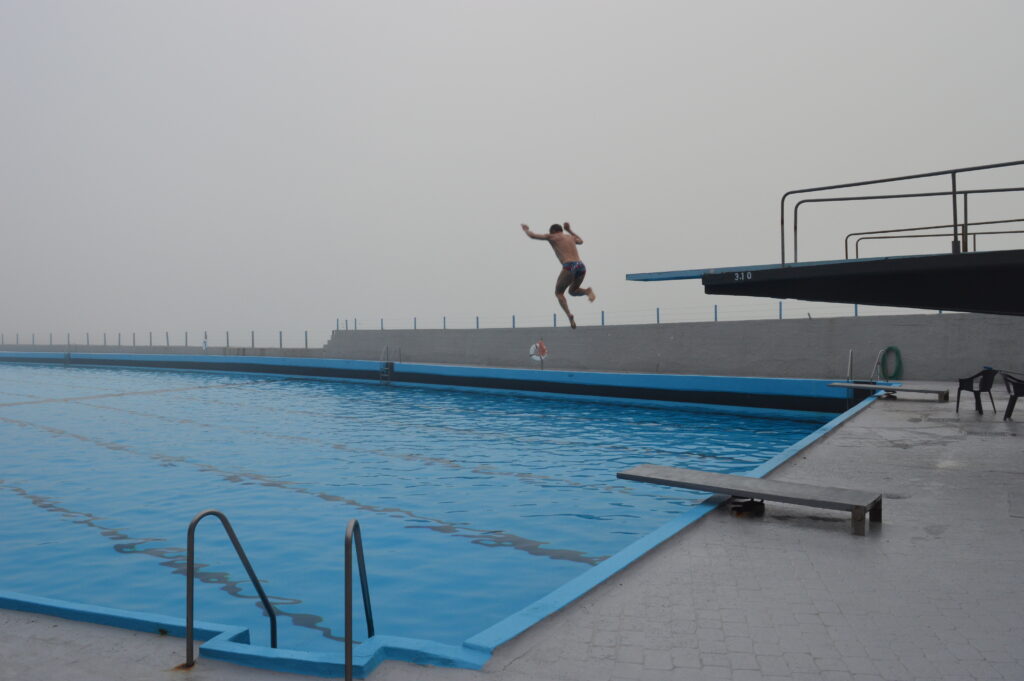OTHER SPORTS

MOVING WITH DIVERSITY IS MORE FUN
.
Why am I introducing you to other sports? Because parkour borrows from many different movements and they have therefore become important for the variety of movements that we have put together in parkour today. Capoeira, gymnastics and climbing have taken parkour into other dimensions and allowed new moves to be created. So here are a few other sports that you’ve probably already heard of.
.
CAPOEIRA
Capoeira is a type of combat dance that has its origins in NiGolo. Brazilian slaves developed this martial dance further.
Today, a distinction is made between Capoeira Angola (‘old’) and Capoeira Regional (‘new’). Capoeira utilises movements from wrestling, jiu jitsu and wushu, but has also developed acrobatic elements.
Flexibility, spinning kicks, jumping kicks and acrobatics are important elements in capoeira, which are accompanied by music.
Parkour has adopted some of these movements, such as the macaco, cartwheel variations or somersault combinations.
In the Moves section you will find a few videos of movements that come from Capoeira.
To give you an impression of capoeira, here are two more videos to watch and be inspired by.
.
GYMNASTICS
We have also adopted many movements from gymnastics. From high bar, floor and barre gymnastics. Here, too, you will find some movements in the moves section, such as the handstand somersault, the flick flack or the cartwheel. Friedrich Ludwig Jahn is considered the founder of organised gymnastics in Germany.
The umbrella organisation for gymnastics is the DTB (German Gymnastics Federation).
Although there was a lot of trouble in parkour with the FIG (World Gymnastics Federation), as they wanted to integrate parkour as an Olympic discipline, I still present gymnastics as a sport. If you want to read more about #FightTheFIG and #WeAreNotGymnastics, you can find numerous videos and texts online.
Here are two gymnastics videos to inspire you to get moving.
.
TRICKING
It is a sport that originated from martial arts in the 1960s. It involves kicks, somersaults and twists. There are gatherings and competitions sponsored by Red Bull.
Here is a video as an example:
.
CLIMBING, BOULDERN
Climbing and bouldering differ as follows: When climbing, you use equipment such as rope, carabiners, a climbing harness and usually a second person to secure you.
In bouldering, there are no ropes as the routes are not as high and the entire floor is covered with soft ground.
While climbing, due to the equipment, is more for enthusiastic climbers, bouldering gyms have encouraged the general public to go climbing from time to time and exercise in a different way to the gym.
While the route can vary as much as you like when climbing on a rock with a rope, everything is more predetermined when bouldering.
The holds of a route all have the same colour and only this one colour may be used for climbing up.
Urban climbing is also becoming increasingly popular. This involves climbing buildings, bridges and similar structures in urban areas. It is usually done without ropes, but with mats on the ground.
Here are two examples of climbing and bouldering.
.
DIVING
High diving is a water sport that was first mentioned in the 8th century BC. A distinction is made between the disciplines of artistic diving (1 m and 3 m springboard), platform diving (5 m, 7.5 m and 10 m platform) and synchronised diving (3 m springboard and 10 m platform), all of which are Olympic disciplines.
In addition, there is cliff diving, DØDS or dive bombing.
Here are a few examples:
.
BREAKDANCE
You can use many movements from breakdancing to integrate them into your movement sequences or to get ideas about what else could be possible. ‘Footwork and floorwork play a major role here.
With footwork and floorwork, you can give your movements your own style. In addition, movement sequences for feet and legs become more creative and safer to execute. As the hands and arms are also used, movements of the ‘Animal Movement’ on all fours are already included here.
Here are a few examples:
If you are on Instagram, here are a few possible profiles to look at and try out.
.
ACRO / SOFTACRO
It is a dance style that combines classical techniques with acrobatic elements.
ACRO originated in the USA and Canada in the early 1900s.
The dance movements come from ballet, jazz, lyrical, contemporary and modern dance. Acrobatic elements such as cartwheels, bridges, aerial, handstands, splits and rolls are incorporated into the dance movements. There are also acrobatic elements for two people or for groups.
At SOFTACRO, there is no competition and no prizes. Here, coordination, flexibility and strength are trained and assembled into a ‘work of art’ of smooth, flowing movements. The movements create a kind of ‘flow’.